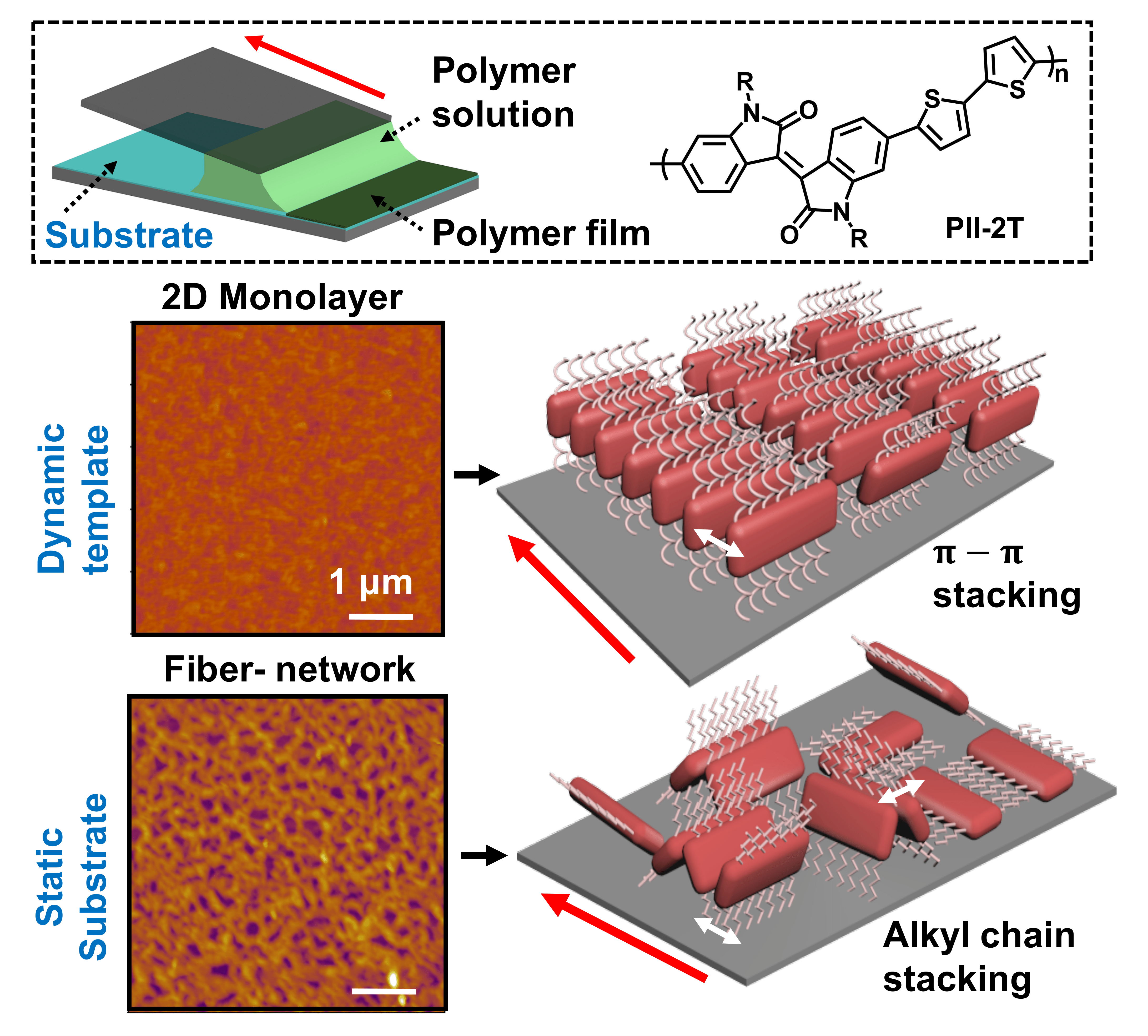2020 Virtual AIChE Annual Meeting
(28f) Dynamic-Template-Directed Assembly of 2D Monolayer Films of Conjugated Polymers and Their Distinct Electronic Properties
Authors
In this talk, we present dynamic-template-directed meniscus-guided coating as a new technique to fabricate 2D monolayer films of conjugated polymers over large area using a wide-processing window. By utilizing two donor-acceptor polymers, DPP2T-TT and PII-2T, we demonstrate that the dynamic-template enhances polymer 2D crystallization resulting in 2D monolayer films with highly ordered and aligned polymer backbone with edge-on ð-ð stacking. In contrast, the monolayer films on solid static substrates resulted in discontinuous morphology exhibiting 1D fiber-network with strong alkyl-chain stacking peaks at the expense of backbone stacking. As a result, charge transport was only observed on monolayer films printed on dynamic-template but not on those printed on solid substrates. As thickness was increased from monolayers to multi-layers, the polymer ð-stacks changed from edge-on to bimodal orientation when the film reached a critical thickness of ~20 nm. UV-Vis spectroscopy and cyclic voltammetry analysis disclosed abrupt rise in J-aggregation, absorption coefficient and decrease in band gap and HOMO level until the film reached a critical thickness, possibly arising from straightened polymer backbone. Furthermore, increase in film thickness resulted in drastic increase of hole mobility in the polymer films, peaking at 0.7 cm2V-1s-1 near the critical thickness, which further corroborated with drastic planarity of polymer backbone with increase in film thickness. Finally, we also fabricated of organic field-effect transistor based chemical sensors incorporating DPP2T-TT films of varying thicknesses and demonstrated ultrahigh sensitivity (~83%) of ultrathin films of ~7 nm thickness (bilayers) to ammonia vapors of 1 ppb concentration.
